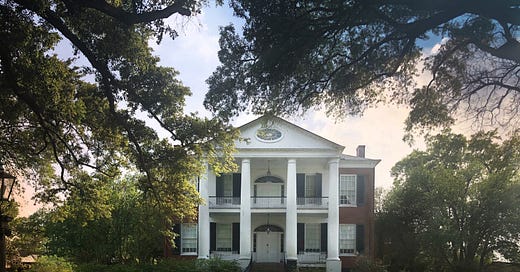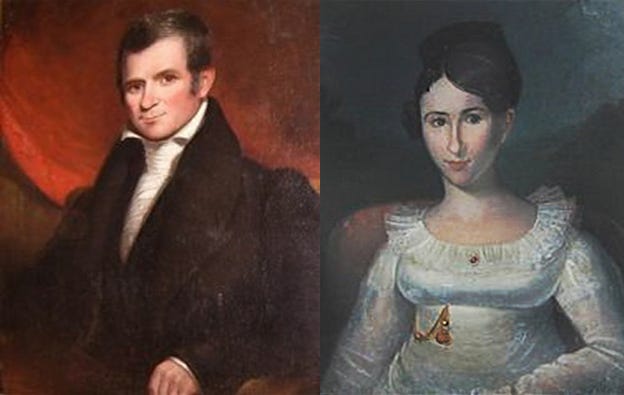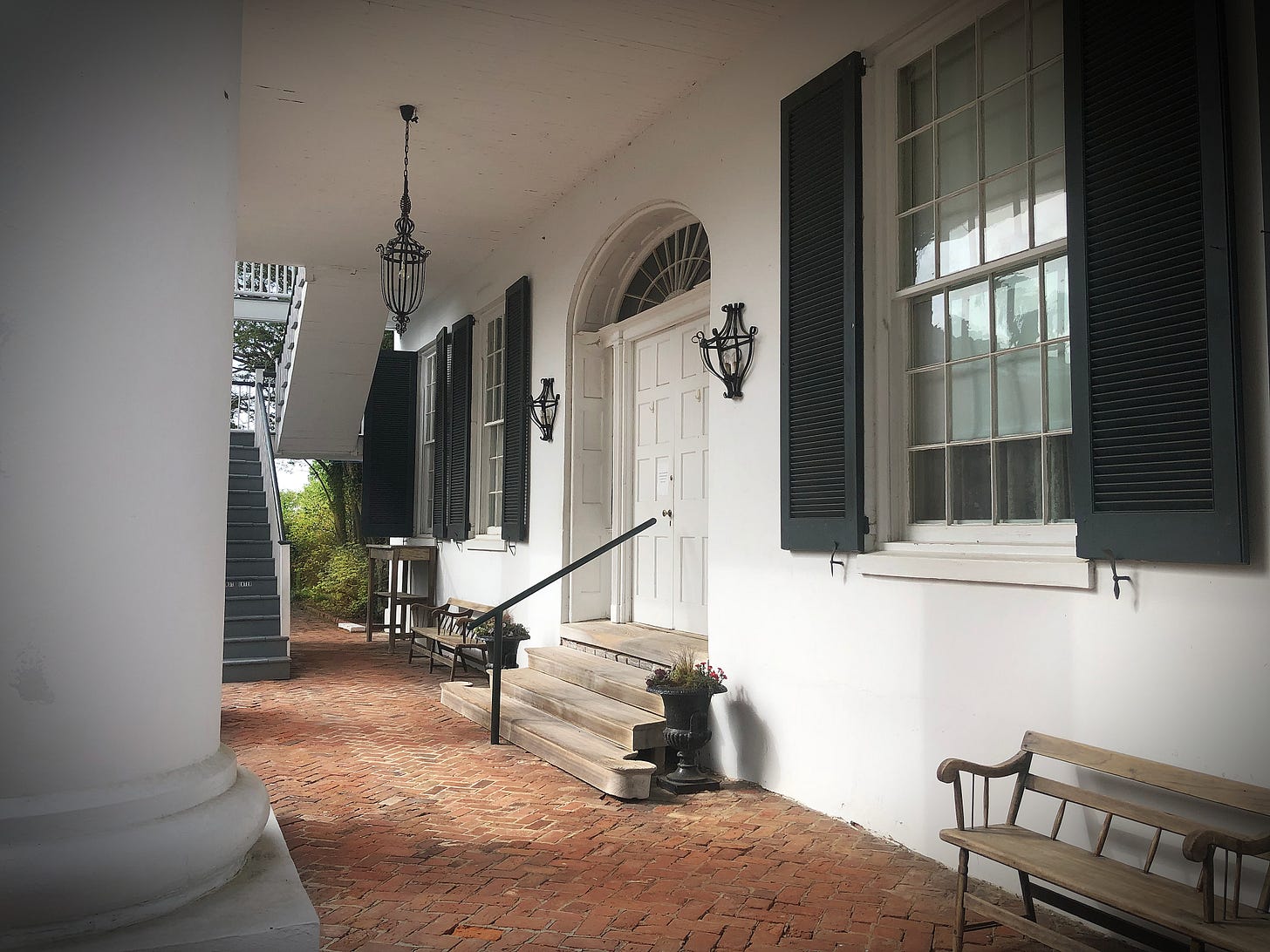Once Upon A House: Rosalie Mansion
The Union Army may have saved the furniture, but long before that, the house known as Rosalie had been saving something much more important. It had been saving the children.
There are some stories for which destiny is the only explanation, and this looks like one of them. The man who purchased this acreage on a bluff overlooking the Mississippi River in Natchez, Mississippi in 1820 did so in order to build his future home. His name was Peter Little.
Since arriving in Natchez in 1798, Little had been acquiring and managing vast tracts of land in Louisiana, which necessitated a lot of ferryboat trips back and forth from Natchez across to the Louisiana shore on the other side. Naturally, as such a frequent customer, he became acquainted with the family who owned the ferryboat. Jacob Lowe and his wife and young daughter, Eliza, quickly became close family friends of Little’s.
There was no way for Little to predict that young Eliza Lowe would soon become an orphan. The 1806 epidemic of yellow fever first took her father, and when her mother next fell victim, Mrs. Lowe knew who to send for. Knowing that she would not survive the illness, the woman asked Peter Little to assure her that he would look after Eliza, who was only 14 years old.
Peter Little, aged 25, gave the dying woman his word and lived up to that promise following her death. He married Eliza Lowe (in name only, due to her young age) and immediately sent her to Baltimore, Maryland to finish her education, but while there, and across the miles, she and Peter Little fell deeply in love.
By the time Eliza Lowe Little returned to Natchez, she was ready to step into her role as the wife of a very successful man. The one element of happiness that eluded the couple, however, was the arrival of offspring. Peter and Eliza Little were childless.
Destiny, however, seemed to be clearing her throat. By 1823, the tract of land on the bluff in Natchez overlooking the river now had the house that Peter Little had always intended. He named it Rosalie. And in the absence of his own children filling up the rooms, Peter and his wife decided to open the house to orphans.
Perhaps because of her own misfortune, Eliza Little had been instrumental in founding the Natchez Children’s Home in 1816. And now that she had such a grand and wonderful place of her own, she graciously opened the doors. Many of the orphans ended up spending their formative years at Rosalie. As well, when Peter Little’s sister died, leaving an orphaned daughter, Peter and Eliza took her in and raised her as their own.
Throughout their resulting 45 years together, the couple lived happily, giving freely of their abundance and making a difference in countless lives. Eliza died first, in 1853 - ironically of the same illness that had taken her parents - yellow fever. And in a sad turn of events, Peter died three years later without having executed a will.
The resulting auction of the property placed it in the hands of Andrew Wilson and his wife in 1857, and Destiny continued to roll. The Wilsons were childless, and, like Peter and Eliza Little before them, they opened Rosalie to orphans. What is more, one of those orphans, a girl named Fannie McMurtry, grew so close to the Wilsons that they adopted her as their daughter.
Perhaps it was Rosalie’s history of generosity toward children that prompted Union Army General Walter Gresham to have all of the furnishings and belongings at Rosalie safely stored and protected in Rosalie’s attic while the occupying troops used the place as Union Headquarters, but whatever the reason, the lovely mansion on the bluff emerged from the war safe and sound.
And, finally, Destiny smiled, took a bow and made her exit. In 1866, Fanny (McMurtry) Wilson married Capt. Stephen Rumble. The ceremony took place at Rosalie, which became home not only to Fanny and Stephen Rumble, but also to their six children who came along afterward.
These days, Rosalie is owned and operated by the Mississippi State Society Daughters of the American Revolution. For more than 70 years, the organization has faithfully maintained and cared for what is now a National Historic Landmark, having received that designation in 1989.
While the house is obviously an architectural stunner, and holds a great and significant place in the history of Natchez itself, the sweetest element of the story of Rosalie (to my mind, at least) is the sound of the children, now just an echo, whose lives were saved and forever changed in the shelter of her arms.
Photos of Rosalie via Beth Yarbrough. Images of Peter and Eliza Little via Find A Grave.






